Lake Mansarovar, being a focal point for one of the most popular pilgrimages in the world, the Kailash Mansarovar Yatra, is located in the Tibet autonomous region, China. At an elevation of 4650 m, it is one of the highest freshwater lakes in the world, covering an area of approx. 320 sq. km, a circumference of 82 km and a depth of around 100 m. The lake, considered sacred in multiple religions like Hinduism, Buddhism, Jainism, and Bon religions, holds immense spiritual and religious significance. In Hindu mythology, the lake is said to have been formed from the mind of Lord Brahma. The name "Mansarovar" (मानसरोवर) is a combination of two Sanskrit words: Mānas (मानस्), meaning "mind" (intelligence, perception, and conscience), and Sarovar (सरोवर), meaning "lake or large pond”.
Despite its location at high altitude, the surrounding region of the lake is home to various floras and faunas, including fish, swans, and others. Also, surrounded by the snow-capped peaks, including Mount Kailash and Gurla Mandhata, it is also an awe-inspiring destination for nature lovers. This article aims to inspire and attract pilgrims to this amazing destination, which has been a dream pilgrimage for many, by discussing the spiritual, cultural, and natural significance of this sacred lake, as well as providing insights into its history, spiritual importance surrounding various religions, and captivating landscapes that surround it.
Listen to our Podcast: Lake Mansarovar
Lake Mansarovar Facts
Here are some facts related to Lake Mansarovar:
|
Site |
Lake Mansarovar |
|
Tibetan Name |
Mapam Yumtso |
|
Chinese Name |
Mapang Yongcuo |
|
Type |
Freshwater Lake |
|
Location |
Tibet |
|
Altitude |
4650 m |
|
Area |
320 sq.km |
|
Depth |
100 m |
|
Circumference |
82 km |
|
Reverence |
|
|
Distributary Rivers |
|
|
Flora |
|
|
Fauna |
|
Spiritual Significance of Lake Mansarovar
Did you know that Mansarovar was a divine lake since the beginning of history, and it has remained so for four millennia? Most of the places of pilgrimage are held sacred for the richness of the marvellous spiritual vibrations, such as the sacred Lake Mansarovar. This lake, located near the holy Mount Kailash and adored by numerous religions, is extremely significant and has its own history and tales. Let us take a closer look at Lake Mansarovar's spiritual and religious importance.
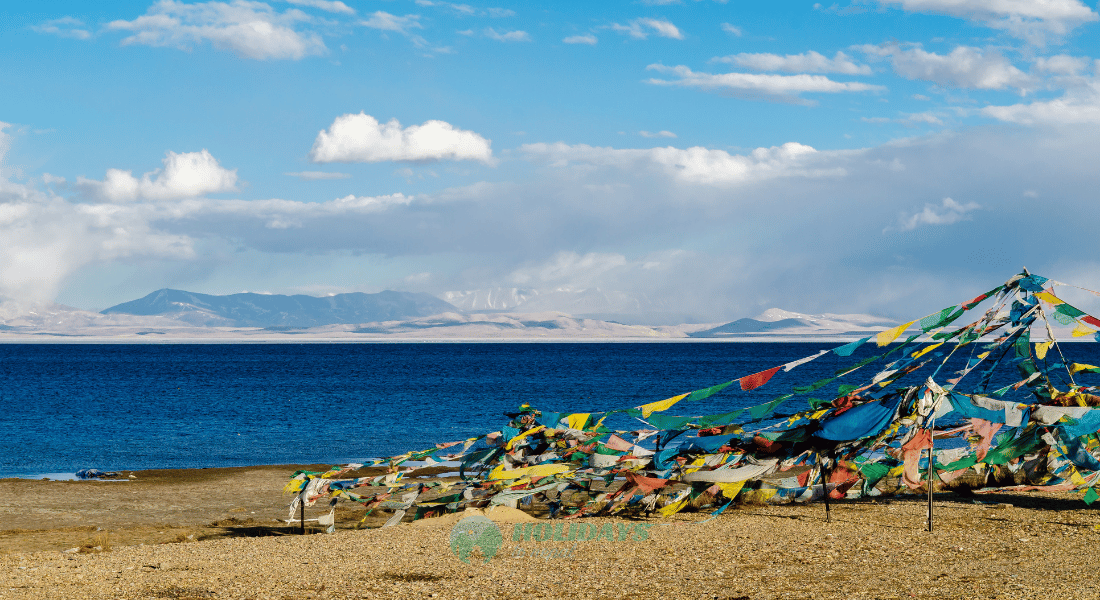
Significance in Hinduism
In Hinduism, the lake is also known as Brahmasar, which means the lake originated from the mind of Brahma, the creator of the universe in Hinduism. Hindus believe that the very act of visiting Lake Mansarovar and performing rituals or prayers can benefit both the body and the soul. They also perform pujas on the shores of Lake Mansarovar as a site of meditation, divine presence, and an essential part of the pilgrimage, which is believed to wash away the sins and attain moksha. The water of Lake Mansarovar is said to give rise to four major rivers: the Indus, Sutlej, Brahmaputra, and Karnali. These rivers hold importance in Hindu mythology and are considered sacred water sources that provide life and sustenance to large parts of South Asia. If one drinks water from it, they will go to the Abode of Lord Shiva after death.
Significance in Buddhism and Bon
The Mansarovar Lake is equally significant for Buddhist and Bon followers. In Tibetan Buddhism this lake is revered as the pious Lake Anotatta, also known as Anavatapta, the lake without heat and trouble. According to the mythology, the Anotatta Lake is that lake where Queen Maya Devi bathed to purify herself before the white elephant entered her womb. It is also believed that in the middle of the lake, there is a tree that bears fruits of immense medicinal properties that is believed to cure all known physical as well as mental ailments. Likewise, there used to be eight Buddhist monasteries around the lake, symbolizing the Wheel of Life. Pilgrims used to circumambulate the lake, visiting each of the monasteries along the way, representing a turn of the wheel. Most of the monasteries have now disappeared (the most notable survivor being Chiu Gompa), but Buddhists and Bon followers still make the pilgrimage around the sacred lake. Also, as per Tibetan Buddhism beliefs, the region was the source of the mythical Lion, Horse, Peacock, and Elephant Rivers.
Significance in Jainism
Jains also consider the Mansarovar Lake significant as it is connected to Rishabhanatha, the first Tirthankara, who achieved Nirvana in Asthaspad, which is located near the lake. The lake is known as Padma Hrada by Jains, and they regard it as a sacred pilgrimage site, allowing them to connect with their spiritual roots. They also believe that after Rishabhanatha attained nirvana, his son, Emperor Bharata, constructed three stupas and twenty-four shrines of the 24 tirthankaras in the region.
Natural Beauty of Lake Mansarovar
“In order to realize and appreciate the grandeur of the Holy Lake Mansarovar fully, one has to spend twelve-months on her shores” said Swami Pranavananda, author of one of the oldest books on Kailash Mansarovar, who has stayed in that region for one whole year. The diverse beauty around different seasons of the year is unparalleled. Being one of the highest freshwater lakes in the world and also said to have been the first known lake to geography, the holy waters not only carry spiritual significance but also hold a divine connection to nature.
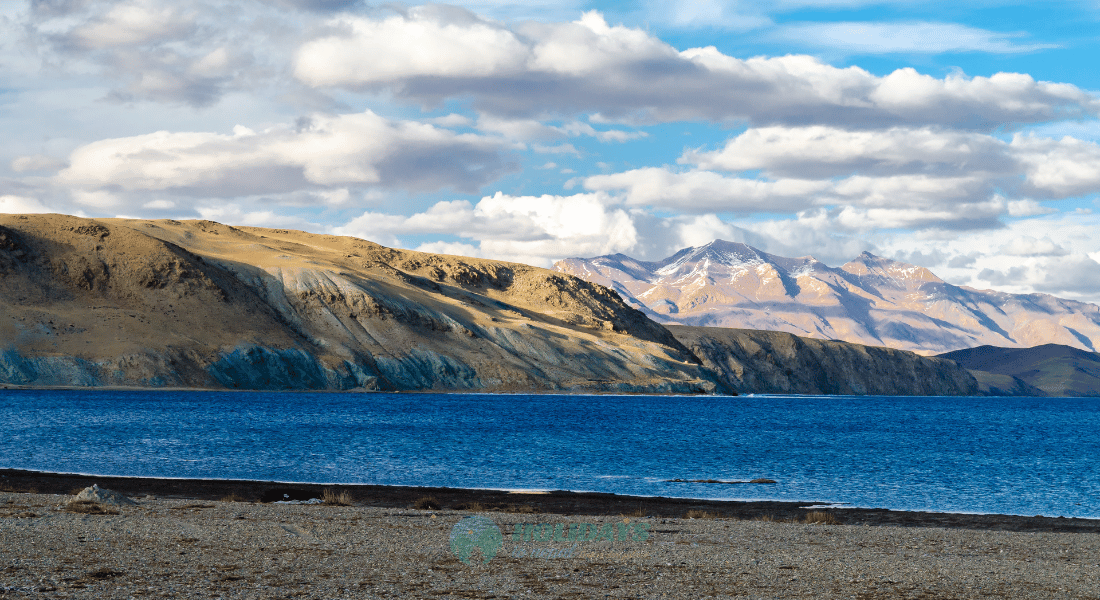
Just standing by the shores of the lake makes one grateful for their life. The lake is surrounded by the various Himalayan ranges, including the holy Mount Kailash (6638 m) on the north and Gurla Mandhata (7728 m) on the south. The east part is covered by its sister lake, Rakshas Taal, and some hills in the western part. The reflection of these mountains in the lake is nothing but mesmerizing. Sometimes the morning sun glides over Mount Kailash and Mandhata Peak and reflects it in the crystal-clear water of the lake, making the sight incredibly beautiful.
Even though the lake is in a high-altitude region, an inferior variety of mushroom, both edible and non-edible, grows in its surroundings. Mainly three varieties of aquatic birds are said to be found in the Mansarovar region, which are usually migratory birds. These floras and faunas add an extra charm to its existing majestic beauty. The serene flow in the summer, white blanketed sheets in winter, the color changing from deep blue to emerald green throughout the day, this vast lake with its thousands of Aura and myriads of forms makes a human meditate, think, and perhaps gives a new transformation to life.
Rivers Originating from Lake Mansarovar
With an area of approximately 320 sq.km, Mansarovar Lake is basically a huge water reservoir. Not only does the water from this lake get poured into the Rakshas Taal, it is also a source of some of the major holy rivers in Hinduism.
|
Tibetan Name |
English Translation |
Indian Name |
Side of the Lake it flows |
|
Langchen Khambab |
River coming out of the mouth of an elephant |
Sutlej |
West |
|
Mapcha Khambab |
River coming out of the mouth of a peacock |
Karnali |
South |
|
Tamchok Khambab |
River coming out of the mouth of a horse |
Brahmaputra |
East |
|
Senge Khambab |
River coming out of the mouth of a lion |
Indus |
North |
Journey to Lake Mansarovar
As said and felt by the travellers around the world, the journey is as significant as the destination itself. The sacred pilgrimage is an unparalleled opportunity to get closer to the Tibetan landscapes, culture, and spirituality. The lake, being a holy site revered by Hindus, Buddhists, and Jain followers, brings one closer to their inner peace. For centuries, pilgrims have made their way towards this sacred site seeking spiritual solace and enlightenment.
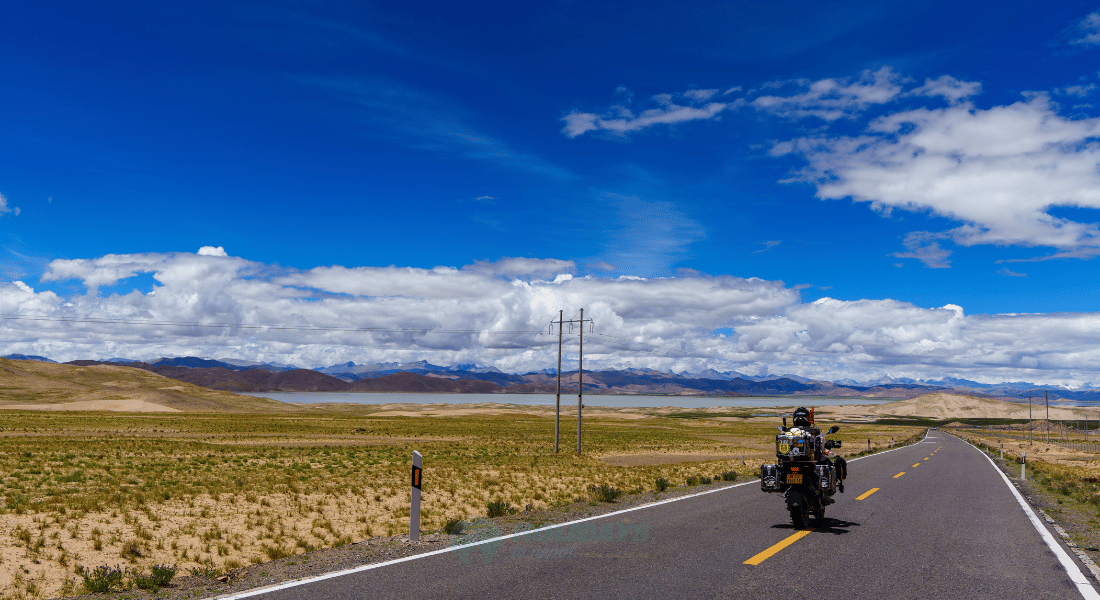
Lake Mansarovar is generally a significant part of the sacred Kailash Mansarovar Yatra. Given that, three different routes can be taken to reach this lake either via the Kyirong border, Tibet, or Lhasa from Nepal as a part of the yatra. This route passes through the various towns and villages of both Nepal and Tibet and finally to the lake, offering travellers a chance to experience the natural and cultural richness of both sides.
Generally, the route from the Kyirong border is the most popular one, which begins from the lower elevation of around 1400 m in Kathmandu. From there, with a scenic drive, it makes major stops at 2850 m at Kyirong, 4500 m at Saga and finally reaching up to the elevation of 4650 m at Lake Mansarovar. This high-altitude journey through the Tibetan Himalayas is a gradual ascent letting the travellers acclimatize properly and providing them with the opportunity to absorb the awe-inspiring landscapes along the way.
|
Routes to Lake Mansarovar |
Learn More: How to reach Kailash Mansarovar?
Lake Mansarovar Vs Rakshastal
Lake Manasarovar and Rakshastal, often considered sister lakes, are located side by side in the Tibet autonomous region at an elevation of 4650 m. Despite their close proximity, it presents symbolism and attributes strikingly differently; one associated with divinity and the other with its negativity.
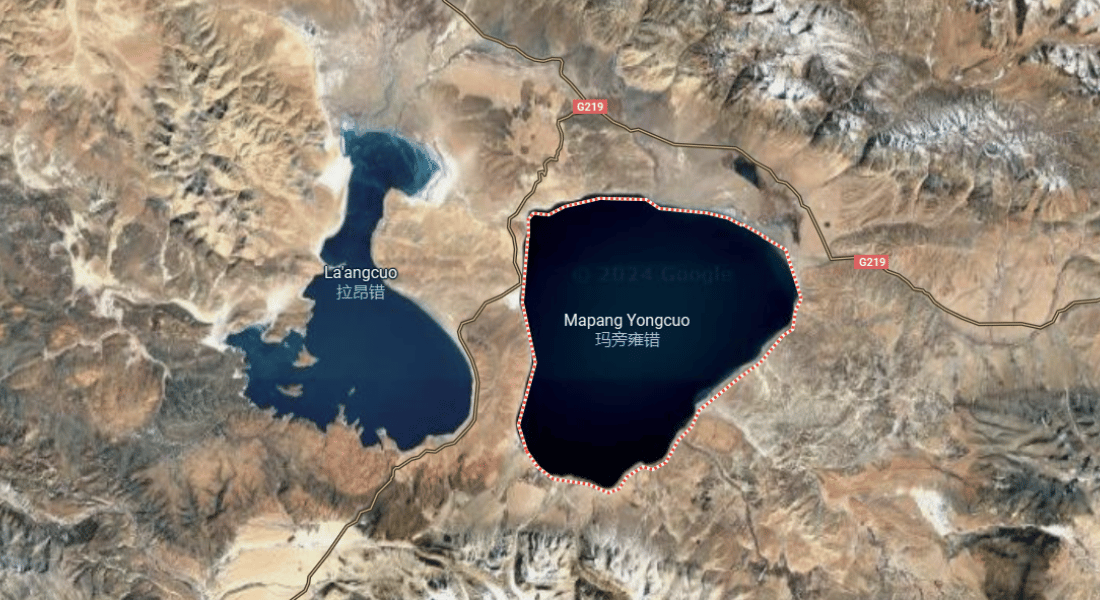
Lake Mansarovar, one of the highest freshwater lakes, is considered the holiest lake in Hinduism, Buddhism, and Jainism, whose water is said to purify the soul and free one from their sins. This lake is the major stop during the Kailash Mansarovar Yatra for pilgrims to bathe in its water, pray, and perform sacred rituals. Meanwhile, Rakshas Taal is a saltwater lake also known as Ravana Hrada or Ravan Sarovar, translating to the lake of demons, considered spiritually inauspicious and ominous. Hence, it is avoided the most by the pilgrims and rarely visited by anyone during the Kailash Yatra.
However, there’s an intriguing legend associated with Rakshas Taal that adds a twist to its perception. One well-known legend among many says that Rakshas Taal was once the home of devils; hence, no one drank water from it. There was a fight between two golden fishes in the Manas, and one of them chased the other in the Rakshas taal through the course of Ganga Chuu. It became sanctified when the sacred waters of Mansa poured out of it. As a result, despite its location and both being equally beautiful, the lakes are contrasted with each other as good and evil, positive and negative, and many more.
Activities Around Lake Mansarovar
The beauty of Lake Mansarovar is not just because of the lake itself but also because of various activities one can do around the lake. The region surrounding Lake Mansarovar provides visitors with a variety of interesting and enlightening experiences that combine spiritual rituals with scenic splendor. Some activities are:

Visiting Monasteries
There were eight monasteries that round Mansarovar: Gossip Gompa, Chiu Gompa, Cherkip Gompa, Lang-pona Gompa, Ponri Gompa, Serlung Gompa, Yerngo Gompa, and Thugolo Gompa, or Thokar. Many of the monasteries have been destroyed and Chiu Gompa is one popular one that survived till date. Chiu Gompa is the closest one to the lake, which is perched on a hill and offers breathtaking views of the surrounding environment, including Lake Mansarovar and spectacular mountain peaks. One can visit this monastery according to their time of stay and learn more about Tibetan Buddhism, the cultural and spiritual practices surrounding it.
Spiritual Practices
Lake Mansarovar, considered sacred among various religions, offers pilgrims opportunities to participate in the spiritual practices, including pujas and hawan. As the water of the lake is believed to purify souls and wash away the sins, pilgrims flock here to bathe in the holy water. Pilgrims are also seen circumambulating the lake, which is believed to drive off the worldly desires and bring immense benefit in life. One can also participate in the meditative activities that resonate with the spiritual energy of the lake.
Scenic Exploration
Lake Mansarovar is a paradise for nature lovers. As one stands by its shores while the mighty Mount Kailash makes its shiny reflection in the lake, one can feel its dominance on you. The changing hues of the lake, which shift from deep blue in the morning to emerald green at sunset, make it even more attractive. The stillness of the lake combined with the high-altitude barren landscape provides a perfect ambience for scenic exploration and meditation around the lake.
Also Read: Must Know Things Before Visiting Kailash Mansarovar
Practical Information for Visitors
The journey to Lake Mansarovar is dependent upon various factors; one needs to be well informed about the practicality that it presents one with. Understanding the logistics and requirements in advance will help visitors fully enjoy the experience and overcome any challenges along the way. Some of the most significant tips to make the travellers fully prepared are:
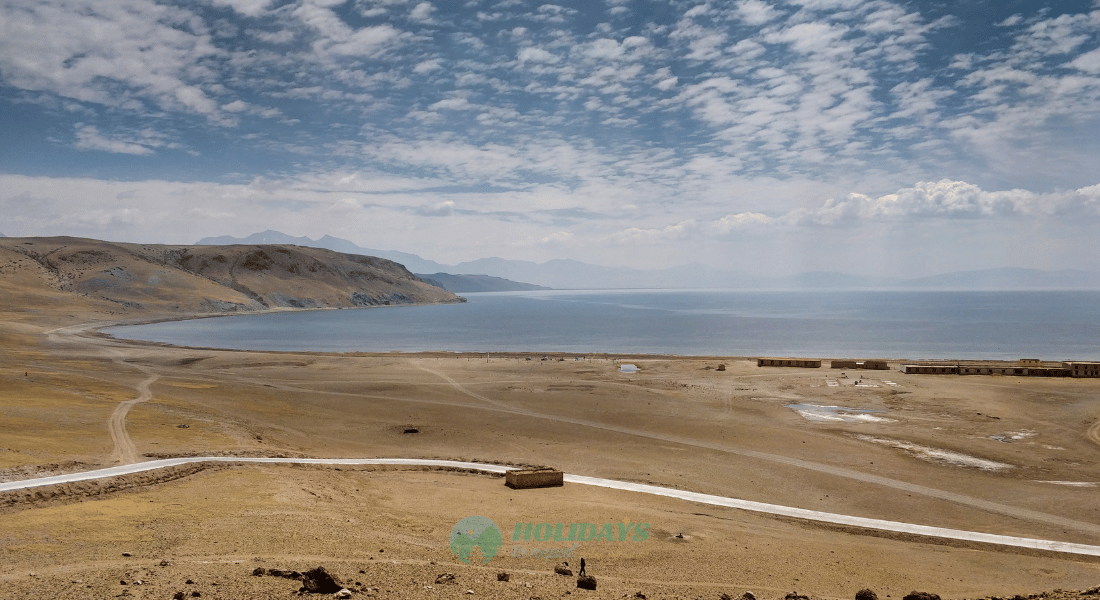
Best time to visit
The ideal time to visit this region is from May to September. Because of the comparatively pleasant and consistent weather, this is the most popular time of year for the journey. The area's beauty is at its peak, and the roads are clear. During these months the temperature can reach 15°C in the daytime and drop to 0°C at night. However, during the early months of June and July, there are occasional rain showers and cloud covers, and during September there are also the chances of snowfall. Apart from these months, the region is generally closed to tourists.
Learn More: Best time to visit Kailash Mansarovar
Things to carry: Packing List Suggestions
Packing smart makes your journey easy and worry-free. From clothes to documents to other necessary items, everything must be chosen wisely. As the weather conditions in this region are unpredictable, layering of cloth is a necessity. Add clothes like thermals, fleece, rain jackets, comfortable pants, and others. Don’t forget necessary documents like the Tibet Travel Permit (TTP), passport, and others. Additionally, personal hygiene items, personal medications, and first aid must also be kept in priority.
Learn More: Kailash Mansarovar Yatra Packing List
Altitude sickness
As mentioned before, the lake lies at an elevation of about 4650 m. Even if it's only a drive up there, the air is thinner compared to the 1400 m elevation in Kathmandu. As the altitude keeps increasing until you reach there, even normal people can experience the altitude problem. One needs to be best prepared for this and must consult the doctor before visiting the high altitude, as health conditions like blood pressure, respiratory problems, and such might be dangerous in high altitude.
Conclusion
Lake Mansarovar, at the foot of the majestic Mount Kailash, continues to inspire pilgrims with its beauty and holiness. As a sacred site for many religions, including Hindus, Buddhists, Bons, and Jains, this lake attracts thousands of pilgrims from all over the world who want to touch its sacred waters and purify themselves. Visiting this holy lake provides a unique opportunity to connect one's religion and belief with the divine, an experience that only a few are fortunate enough to enjoy.
This lake's high elevation, bleak terrains, and different spiritual practices and rituals done at the lake provide a strong backdrop for an individual's pilgrimage journey. If you want to embark on this sacred pilgrimage yourself, we hope this article has given you an idea of what you might expect and why this lake is so important to pilgrims, as well as some practical recommendations.

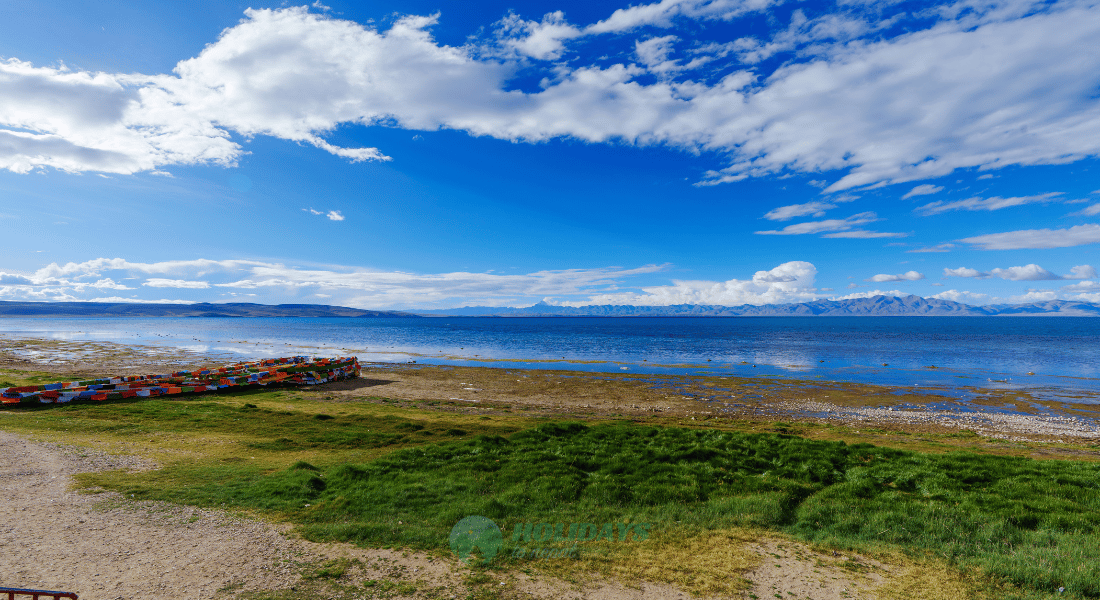
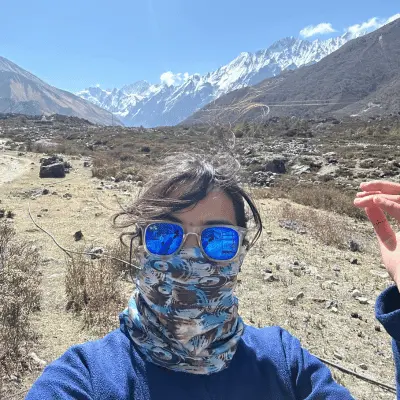 Mandira Itani
Mandira Itani